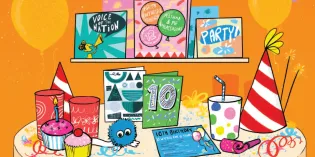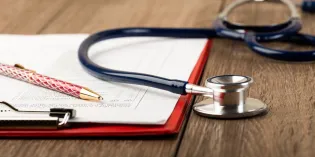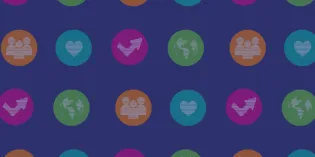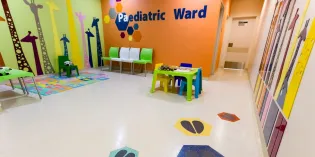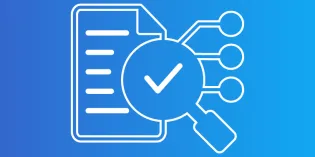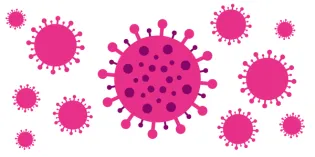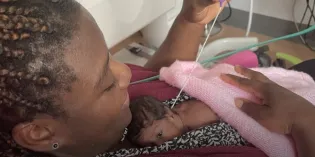
At 19:15 in a small sombre clinic room, I had a swollen knee to inject. The first-year university student to whom the offending joint belonged sat up on the couch, legs outstretched, trouser leg rolled up, and armed with banter and a phone. He typed away as I approached.
"Glad to see you’re keeping up with assignments", I mocked.
"Nope. Just tweeted the injection."
It was unpredictable, but my adolescent and young adult clinic in Oxford was my favourite and where I learnt the most. A greater informality meant a different sort of honesty and an engagement with ideas.
Skills
Common sense is a collection of prejudices acquired by the age eighteen.
This evening clinic for young people up to 23 years catered for all those progressing through the paediatric service, focusing on developing the many skills required for self advocacy and self management before onward referral to any adult clinic. It also supported those referred to our local adult service who needed or wanted a different approach.
In this clinic, we too developed our skills. We came to recognise the importance of a young person feeling heard, promotion of health literacy and guiding experimentation in self-management. The rationale: to influence life long health behaviours known to affect long term outcomes and do our bit to help improve the wellbeing in this population which hasn’t seen the improvements in morbidity and mortality of the under-fives and over 50’s.
Neurodevelopmental challenges
In later life we look at things in a more practical way, in full conformity with the rest of society, but adolescence is the only period in which we learn anything.
This can be tied into the huge neurodevelopmental changes that begins shortly after puberty and continues beyond age 25 years. For instance, the pre-frontal cortex of the brain doubles in size and the synapses within are pruned back as the skills for independence – understanding risk, identity, self-reliance, the benefits and threats of peer relationships, a world view and “wronging the ancientry” (Shakespeare) – are embedded.
All of which takes for granted a healthy mind and body relegating health concerns and behaviours to a surprisingly low priority.
There are brilliant studies to show this. Teens using car simulators drive accurately, with string back gloves, when on their own, but in a group it all goes “Grand Theft Auto”. Or for adolescent lab rats with access to an alcohol filled dropper bottle in the maze, only when there is a group of them does the party begin - unlike adult rats who remain largely abstemious.
It's all learning!
These studies don’t indicate a lack of capacity for learning. In fact, in the safety of numbers this is active learning. It’s vital our approach to engagement of young people accommodates the different challenges for young people and the many, many transitions and counterpoints during this period.
In my experience it doesn’t take much to adjust. And if DNA rates are anything to go by, a drop from 50% to 11% has to say something.
So, why have we not learnt?
Sara Crowley, the inspiring NHS Executive Diabetes Transitional Care National Coordinator, and I mused on how the culture and care for young people, or emerging adults (PDF) really hasn’t changed over the last 20 years. This is despite excellent guidelines, standards of care and quality documents many coproduced with young people.
Is it because there isn’t an economic precedent, a political imperative or the pejorative assumptions about “hormones” and “hoodies.” Speaking with paediatricians and adult clinicians alike, neither find this age group straightforward, worried by a steely silence, an anxious parent, or a knowing sneer. This may explain the disproportionately long waiting times for 16 – 18 year olds in our recent RCPCH Wales publication, Worried and waiting (or see my previous blog) when we called for an investment in age-appropriate care and a review of the Welsh Government transition guidance.
I would there were no age between sixteen and three-and-twenty, or that youth would sleep out the rest; for there is nothing in the between but getting wenches with child, wronging the ancientry, stealing, fighting.
My personal thought is we are all guilty of assuming “good health is wasted on the youth”, and there is a lack of compelling data within our practices and services to challenge this. Perhaps that can change.
There are new data sets that now map the life course of populations and not confine data points to services for the young or the old. Such an example recently shared is that of the Gwent Joint Strategic Assessment which maps a life course of a health population and gives equal weight for teens to allow monitoring of the trajectory into early adulthood.
Another way is to “just do it”, find a colleague in adult services, and set up an adolescent and young adult clinic of your own and try to help reverse the comparatively poor state of health and wellbeing in adolescence and early adulthood in the UK.
- A case history
-
It is my usual practice to explain confidentiality to young people when we first start seeing them on their own. I did this with a 17 year old whose family were from the Middle East, although she had been resident in the UK from a very young age. Her arthritis was well controlled on methotrexate and a TNF inhibitor, and I thought this would be a straightforward consultation.
As we went over the rationale for her medication, she shared information she had not discussed with her parents and did not want her parents to know. Afterwards we agreed what I would share with her mother who came in at the end. It had been an easy discussion and relevant to her daughter’s health.
I made the transcribed text more discreet and pressed the importance of sending the letter to just my patient and not to her parents only for my secretary to receive a call from the young person when her parents had opened the letter - systems had reverted to sending my letters to parents. We looked at our processes and I remain wary of imperfect systems of care.
(This is not based on one patient. It is a composite to illustrate adolescent care.)


